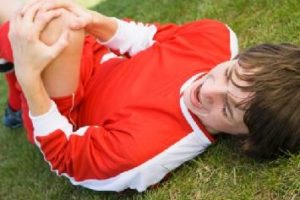 In our last post we looked at Severs Disease – a condition characterised by heel pain in early adolescents. This post we will look at Osgood-Schlatter – a major cause of knee pain in adolescents.
In our last post we looked at Severs Disease – a condition characterised by heel pain in early adolescents. This post we will look at Osgood-Schlatter – a major cause of knee pain in adolescents.
The language of orthopaedics is rather interesting in that it often credits the original describers or those who popularized a disease process by attaching their names to the disease process in question. These so-called “eponyms” have become quite commonplace in our literature and offer important orthopaedic historical insight.
Often throughout history, the simultaneous discovery of a disorder is described by two independent researchers, resulting in a hyphenated eponym. Such is the case in the observations made by two physicians, Robert Bayley Osgood and Carl Schlatter, concerning overuse injuries of the tibial tubercle in adolescents.
Overuse injury that occurs in growing adolescents
Like Severs Disease, Osgood – Schlatters Disease (ASD) is an overuse injury that occurs in growing adolescents.
The quadriceps tendon at the front of the thigh attaches into the shin bone (the tibia) below the knee cap via the patella tendon. Osgood – Schlatters is caused by inflammation where the patella tendon attaches onto the shin bone.
The point where the tendon attaches (the tibial tuberosity) swells and feels painful during physical activity such as running, kicking and stair climbing. It can also be painful to kneel because of the direct pressure on the attachment.
Symptoms of Osgood – Schlatter Disease (ASD)
Knee pain with activity that eases with rest
Pain with running/ jumping and /or going up and down steps
Pain with fully bending the knee
Pain with fully straightening the knee
Red/ tender lump below the knee cap where the tendon attaches.
But why do teenagers get knee pain ?
- Most cases of Osgood – Schlatter occur during early adolescents – ages 13 to 14 in boys and 10 to 11 in girls. It is likely this is a result of the fast growth experienced in these years. As the bones grow the tendon can become tighter causing it to pull on and inflame where it attaches.
- Exercise: Strong activation of the quads during exercise can then aggravate this pull.
- Boys are more susceptible than girls.
So my child has Osgood Schlatter: What can I expect?
Osgood Schlatters is self-limiting -that is it should resolve over time as the child’s growth slows. Occasionally the tendon attachment becomes so irritated that micro-fractures develop in the bone where it attaches. In rare cases it can become partially detached. The body reacts to this by laying down extra bone making the attachment appear as an enlarged bump. This hasn’t been found to lead to any long term problems later in life.
What do we do now?
Although Osgood Schlatter is likely to resolve itself in time, while it is active, it is painful and limiting. It is therefore important to manage it with the following strategies:
- Activity modification- this can involve avoiding aggravating sports for a couple of weeks until the pain settles and then slowly starting up again
- Apply ice to the area below the knee cap regularly (at least daily) and always after physical activity
- Gentle stretching of the leg muscles guided by your physiotherapist
- Physiotherapy treatment including soft tissue releases, ultrasound and activity progression advice and taping.
- Medications such as anti-inflammatory may be indicated but you should check with your GP.
- Advice regarding strapping or the use of very specific braces to support the patella tendon.
Remember your MGS Physiotherapist can also help with
pre-session preparation and guide you with how best to
progress exercise during and after injury.
